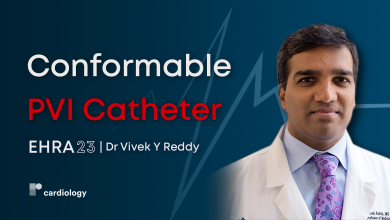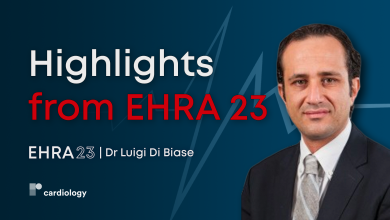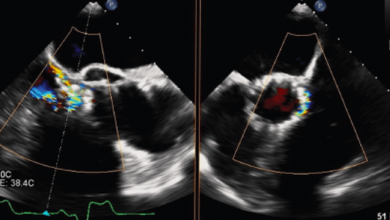Search results
Stavros Stavrakis
Research Area(s) / Expertise:
Job title: Associate Professor of Medicine; Laureate Chair in Molecular Medicine; Vice Chief, Cardiovascular Section
Author
Author(s):
Rainer Moosdorf
Added:
3 years ago
Pulmonary embolism is mainly caused by deep venous thrombosis in the lower extremities, mostly due to longer immobilisation and/or restricted venous backflow. Thus, most patients have a typical history; however, symptoms may be misinterpreted and therapy delayed. While smaller or fragmented thrombi in the peripheral segments of the pulmonary arteries may only cause dyspnoea and hardly any…
View more
Author(s):
Vivek Reddy
Added:
1 year ago
EHRA 2023 — Dr Vivek Y Reddy (Mount Sinai Hospital, US) shares the details of a study looking at conformable PVI catheters for pulmonary vein isolation (PVI). The study investigates the use of a highly deformable mesh-like eight-french catheter that has recently received CE mark approval. The trial is ongoing at three centers.
Questions:
What's the research context or rationale?
Describe the…
View more
Foreword
Author(s):
Ronnie Willenheimer
Added:
3 years ago
Article
Foreword
Author(s):
Juan Carlos Kaski
Added:
3 years ago
Article
Author(s):
Anna E Platek
,
Anna Hrynkiewicz-Szymanska
,
Karolina Semczuk
,
et al
Added:
3 years ago
Topic: 4. Arrhythmias
Introduction and Objectives
Atrial fibrillation (AF) patients can be managed with rate control and rhythm control strategies. Both seem to be equally safe and effective, and the decision should be made depending on patients and doctors’ preferences.1 The aim of the study was to compare patients with persistent AF in whom rhythm control strategy is chosen to those with…
View more
Author(s):
Luigi Di Biase
Added:
1 year ago
EHRA 2023 — Join us as Dr Luigi Di Biase, Section Head of Electrophysiology, Director of Arrhythmia Services, Professor of Medicine and Senior Researcher, shares his insights on the highlights of the late-breaking trials presented this year. What are the latest developments in arrhythmia and electrophysiology? How should the latest data impact your practice?
0:21 - PowerFast
2:18 - MANIFEST-PF
…
View more
Featuring: Antonio Bayés de Luna
Author(s):
Antonio Bayés de Luna
Added:
3 years ago
Article
Author(s):
María Martin
,
Javier Cuevas
,
Helena Cigarrán
,
et al
Added:
2 years ago
Author(s):
Erwin Oechslin
,
Rolf Jenni
Added:
3 years ago
Non-compaction of the myocardium is gaining prominence as a rare, distinct cardiomyopathy characterised by the presence of numerous, excessive prominent trabeculations and deep intertrabecular recesses which communicate with the left ventricular cavity. Two decades of research have identified a new disease - firstly, its morphologic and clinical characteristics were described on clinical…
View more













 « First
« First